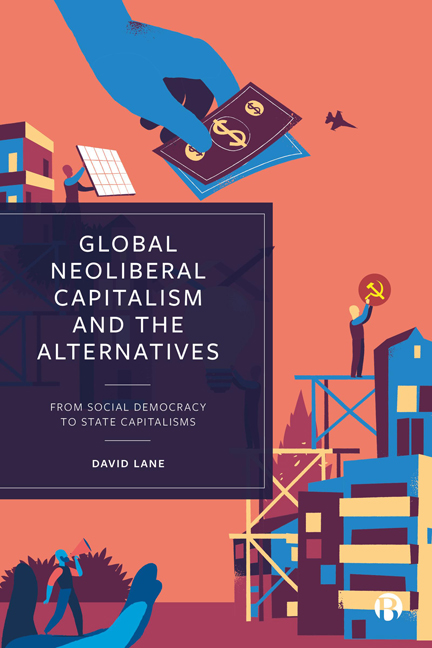Book contents
- Frontmatter
- Contents
- List of Figures, Tables and Boxes
- About the Author
- Acknowledgements
- 1 Introduction
- 2 Global Neoliberalism and What It Means
- 3 Neoliberalism: A Critique
- PART I Socialist Contenders and Their Demise
- PART II Capitalist Globalisation and Its Adversaries
- Appendix 16A Social Formations: Patterns of Coordination and Control
- Appendix 16B Regulated Market Socialism
- Index
2 - Global Neoliberalism and What It Means
Published online by Cambridge University Press: 20 January 2024
- Frontmatter
- Contents
- List of Figures, Tables and Boxes
- About the Author
- Acknowledgements
- 1 Introduction
- 2 Global Neoliberalism and What It Means
- 3 Neoliberalism: A Critique
- PART I Socialist Contenders and Their Demise
- PART II Capitalist Globalisation and Its Adversaries
- Appendix 16A Social Formations: Patterns of Coordination and Control
- Appendix 16B Regulated Market Socialism
- Index
Summary
Capitalism can take many forms. Max Weber distinguished between political capitalism and modern industrial capitalism. I turn to political capitalism in the form of state capitalism in Chapter 15. Modern capitalism is distinguished from its earlier forms by virtue of its continuous quest for profit through capital investment, by the separation of business from the household, by monetary transactions through an impersonal market, and by the exploitation of wage labour. For Weber, the object of modern capitalism is the production of commodities and the provision of services for profit, backed up by rational accounting, rather than speculative money making. Modern capitalism might be defined as ‘the pursuit of profit and forever renewed profit, by means of continuous, rational capitalistic enterprise’.
Karl Marx produced a conception of capitalism as a historically determined mode of production. Social classes have a prominent place in the Marxist conception. The distinction of Marx, however, is that investment is derived from exploitation through the extraction of profit (surplus labour). The capitalist class is driven by the pursuit of continuous profit which accrues from investment through the market. This process creates classes and class conflict. Both thinkers agreed that capitalism is more than an economic system, it is a form of society with a division of labour and interdependent institutions of the state, law, finance, markets, the family, education and research. How the different parts of the capitalist system fit together is the subject of ‘varieties of capitalism’.
Neoliberalism is the dominant economic and social form that capitalism takes in the twenty-first century. In this chapter I consider how neoliberalism has outgrown classical liberalism and what its advocates consider its positive features and why it should be adopted. In the next chapter I consider its inadequacies. ‘Neoliberalism’ is an ambiguous concept. One commentator lists six uses of the term: an ‘all-purpose denunciatory category’, ‘the way things are’, an institutional framework to describe forms of national capitalism, a dominant ideology, a form of governmentality, and a theory and policy variant of liberalism.3 Much of the literature refracts ‘neoliberalism’ through the prism of other theoretical positions (Marxist, Foucauldian, conservative, liberal), which rarely define the gist of ‘neoliberalism’.
- Type
- Chapter
- Information
- Global Neoliberal Capitalism and the AlternativesFrom Social Democracy to State Capitalisms, pp. 18 - 40Publisher: Bristol University PressPrint publication year: 2023

